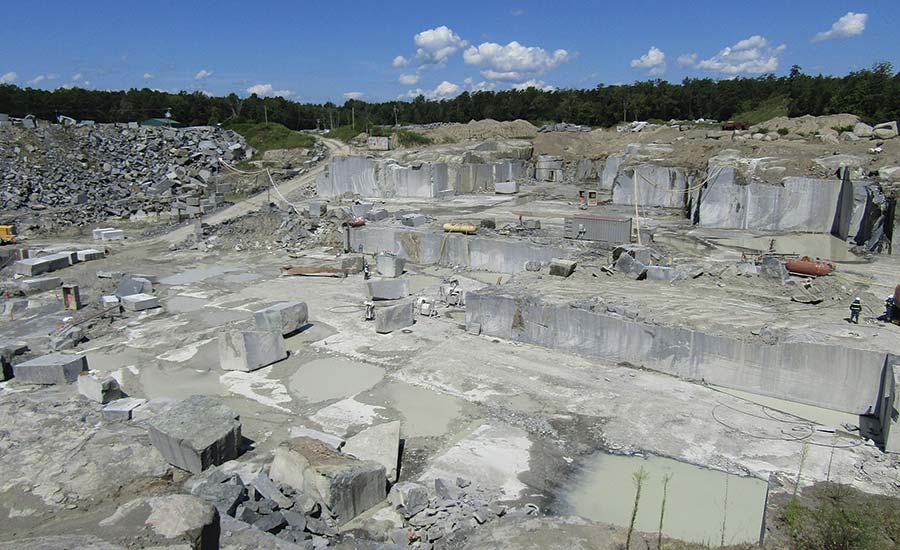Granite Quarries in South Africa Marvels: Discovering the Quarry Landscape
Granite Quarries in South Africa Marvels: Discovering the Quarry Landscape
Blog Article
Discovering the Rich Background and Sustainable Practices of Granite Quarrying
As we depend on the precipice of discovering the intricate tapestry of granite quarrying, a journey with time discloses not simply the physical act of removing stone however likewise the social and historical significance woven right into the really textile of this technique. From the ancient origins that laid the structure for modern-day quarrying methods to the sustainable practices that are shaping the future of this industry, each carve mark on granite surface areas narrates waiting to be uncovered (granite quarries in south africa). The legacy of granite quarrying stretches much beyond simple removal; it is a testament to human ingenuity, durability, and the long-lasting appeal of this impressive rock
Old Beginnings of Granite Quarrying
Going back to old people, the method of quarrying granite has been an important component of human background and building development. The earliest evidence of granite quarrying go back to old Egypt, where large pyramids and elaborate sculptures were crafted from this long lasting stone. The Egyptians utilized primitive tools to extract granite blocks from quarries, showcasing the significance of this product in their huge buildings.
Moving on in history, the Greeks also made substantial contributions to the quarrying of granite. The Greeks utilized granite in different architectural wonders, such as holy places and sculptures, showing their skill in shaping and carving this durable rock. The Romans additionally fine-tuned the methods of quarrying granite, using sophisticated tools like chisels and hammers to essence and shape granite for their legendary frameworks.
Via the centuries, the practice of quarrying granite has developed, with modern-day technologies enhancing effectiveness while preserving the timeless appeal of this natural rock - granite quarries in south africa. From old human beings to contemporary builders, the tradition of granite quarrying remains to form our globe
Advancement of Quarrying Strategies
The development of quarrying strategies has been marked by a continual progression towards better efficiency and precision in extracting granite. From the primary techniques utilized by our forefathers to the sophisticated technologies used in contemporary quarrying procedures, the sector has actually undergone considerable advancements. Early quarrying methods included hand-operated labor with fundamental devices such as blades, hammers, and wedges to remove granite blocks from the earth. As human beings advanced, techniques like fire-setting and primitive dynamites were presented to promote the removal procedure.
Developments in computer-controlled tools and 3D modeling have enhanced quarrying operations, leading to minimal environmental influence and boosted sustainability techniques. As the demand for granite proceeds to climb, the evolution of quarrying methods continues to be indispensable to meeting market needs efficiently and sustainably.
Cultural Importance of Granite
Granite holds a profound cultural relevance across various human beings because of its enduring existence in architectural masterpieces and prized monuments. From the impressive pyramids of Egypt to the elaborate makings of the Angkor Wat holy place in Cambodia, granite has been a material of selection for sharing majesty and long find more life in social heritage. In ancient Rome, granite columns adorned temples and public buildings, symbolizing strength and durability. The social value of granite expands beyond its physical attributes; it personifies durability, stability, and timelessness, making it an icon of sustaining heritages and customs.

Lasting Practices in Quarrying
Amidst the abundant background of granite quarrying and its social significance lies a growing focus on lasting techniques within the sector. As ecological awareness and problems concerning resource deficiency have actually increased worldwide, the quarrying market has actually significantly accepted lasting approaches to minimize its influence on the atmosphere and bordering neighborhoods.

Moreover, recovery and recovery of quarry websites post-extraction are indispensable to lasting methods. By recovering quarried areas to a natural or beneficial state, such as creating look at this site wildlife habitats or entertainment spaces, quarriers can balance out the environmental footprint of their operations and add positively to the local environment.
Legacy of Granite Quarrying
With a historical background steeped in workmanship and commercial progress, what withstanding effect has granite quarrying left on the landscape of modern society? The legacy of granite quarrying transcends mere removal practices; it has actually shaped architectural marvels, find more info urban landscapes, and social heritage worldwide. The durable nature of granite has actually made it a preferred choice for monoliths, buildings, and facilities, standing as a testament to the ability and artistry of quarry employees throughout generations.
Moreover, the economic impact of granite quarrying can not be ignored. The industry remains to provide employment chances and drive local economic situations in regions where granite extraction is common. It has additionally spurred technical developments in quarrying techniques and tools, bring about a lot more effective and lasting methods.
In terms of sustainability, the heritage of granite quarrying consists of initiatives to minimize environmental influences with improvement jobs and accountable resource management. By stabilizing economic passions with ecological stewardship, the industry strives to make certain that future generations can remain to gain from this enduring natural deposit.
Final Thought

Report this page